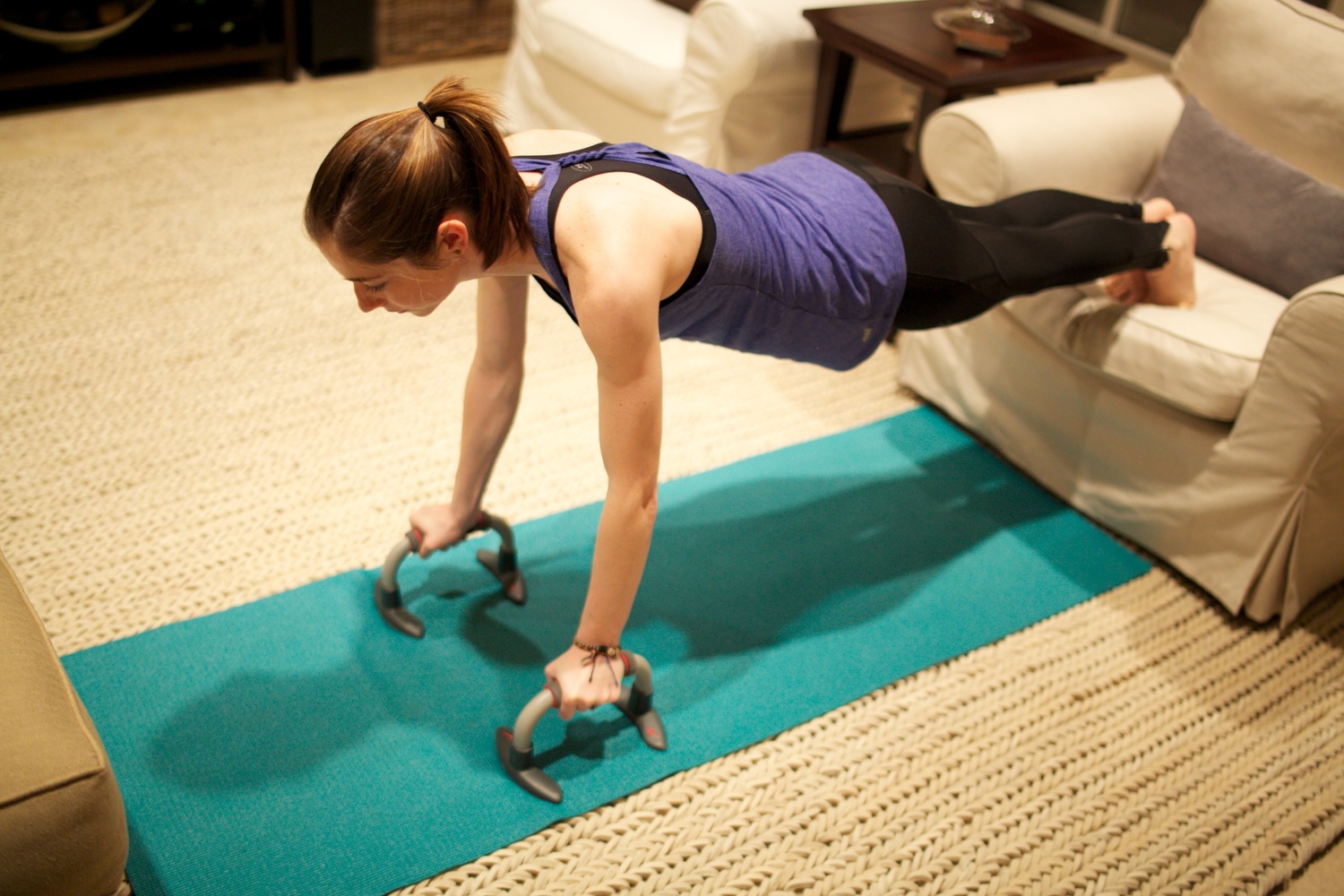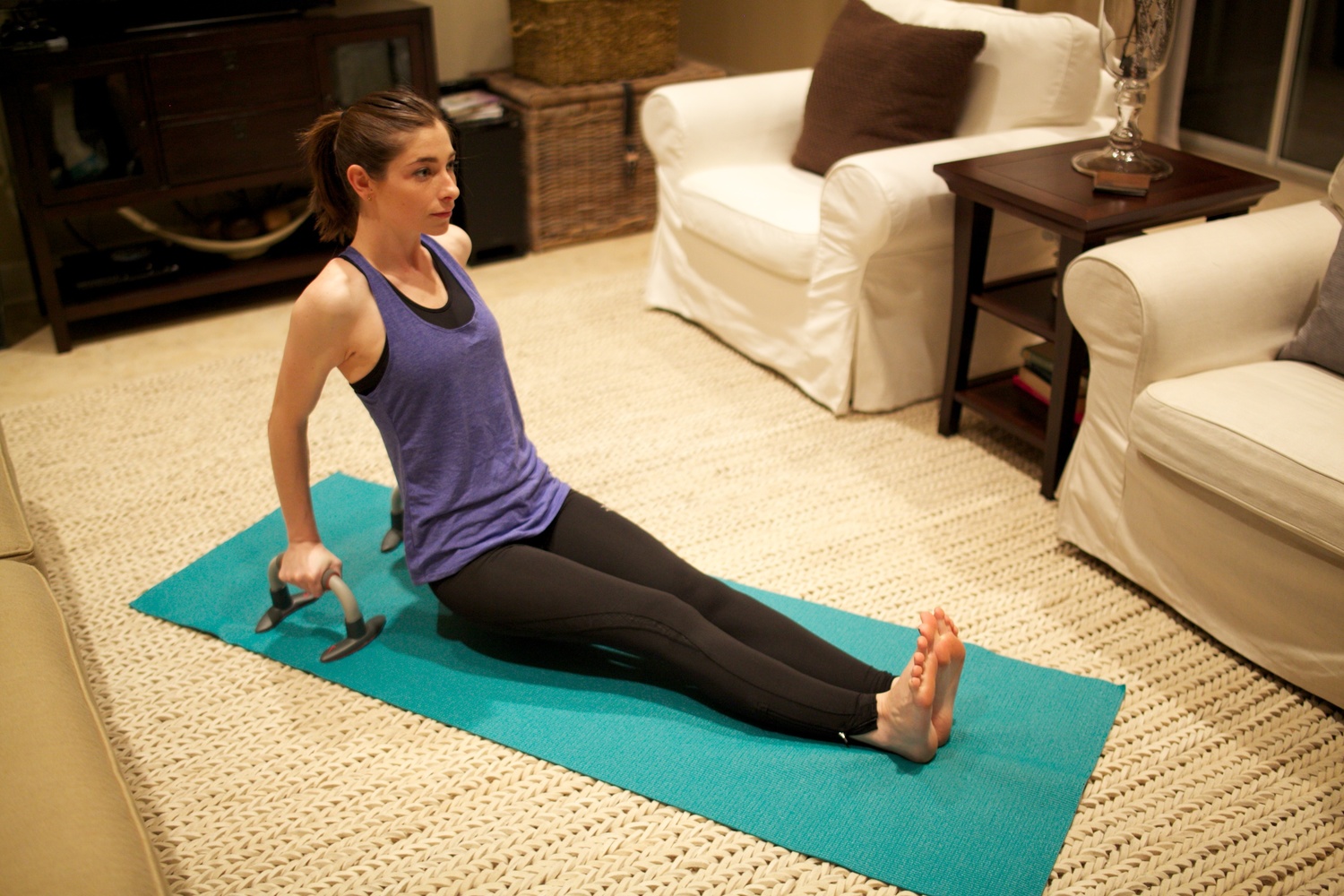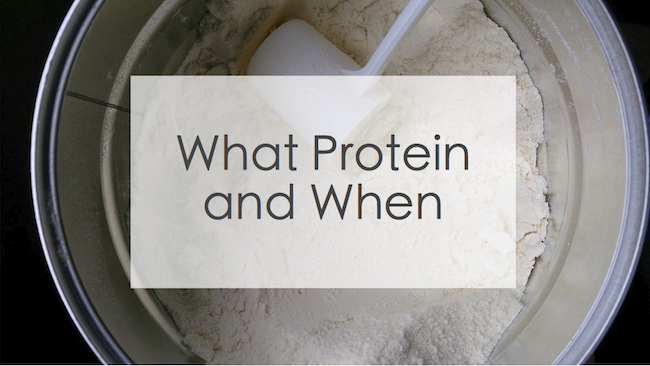Push-up bars have quickly become one of my favorite (and only) workout tools. They are great for increasing a workout's intensity, while decreases stress and strain on your joints. The increased range of motion gives muscles a longer distance and amount of time to work. This means that the same exercise done with push-up bars can work more muscles for longer and give better results than a workout without. If you have ever suffered from sore, tight wrists when done with a plank workout or a set of push-ups, these will help decrease that pain and stiffness during and after the workout. I use my push-up regularly after a jog when I am doing my plank workout and find my shoulders and wrists are less stiff post workout, while my range of toning increases!
There are plenty of ways and workouts that we can benefit from using the push-up bars, these are six of my favorites that will increase results and work everything from the arms and back, to the bum and legs, to the core.
Push-Ups
Doing regular push-ups with push-up bars is a great way to vary a common routine. The difficulty level is increased with these since you can go about two inches lower. Complete a regular push-up with bars out straight and palms facing in, then lower down so you are almost touching the ground, hold, and return to starting. So great for the arms, shoulders, chest, and back.
Wide Arm Push-Ups
These are great for working the back and triceps. Place the bars so they horizontal and a bit more than shoulder width apart. Hold the bars so your fists are facing forward and the bars are in the same line as your shoulders. Lower down so your head is level with the bars, hold, then rise back up.
Shoulder Press
This is a step up from the usual push-up and will work your shoulders, chest, and arms. Go into push-up position with bars under shoulders and feet resting on a chair. Complete the push-ups as usually with feet remaining stationary on the chair the entire time. If you would like to increase the difficulty, place feet against a wall instead.
Plank Toe Rolls
Go into plank position and begin on the balls of your feet with arms in alignment with shoulders. Roll your body forward so your you are on your tip toes and your shoulders are above the arms. Be sure to keep your core tight and body fluid while moving. Hold, then return to starting position. This is great for the inner thighs and core!
Leg Tucks
Leg tucks will give your core and arms a workout. Begin by sitting on the ground with arms to the side and palms facing in- holding the push-up bars. Raise your body off the ground so your arms are supporting most of your weight but your feet are still at rest. Tuck your feet and bend knees into the chest. Hold, then extend the right leg. Hold the right leg out while the left is still tucked in, then tuck both legs to the chest. Repeat, extending the left leg out. The straighter your leg and back are, the better the results will be. To increase the intensity, try extending both legs together.
Triceps Dip
Like the name implies, these are will work your arms, and more specifically, your triceps. Begin in the same position as the leg tucks with arms by your side and palms facing in. Legs should be extended and heels should be on the ground. Lift your body up so your arms are supporting most the weight. Bend arms backward so the body lowers toward the ground and hold right before the bum touches the floor. Slowly come back up to starting position.









This post has been, by far, the most popular article on P+K yet- which makes me wonder, did you come to P+K through 6 Ways to use Push-Up Bars? Originally posted on January 15th, 2013

